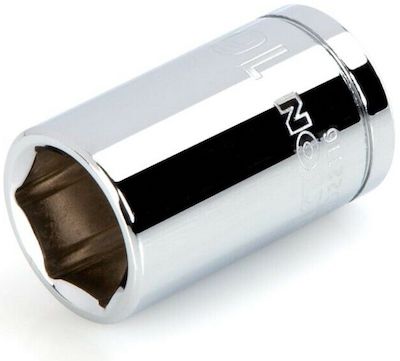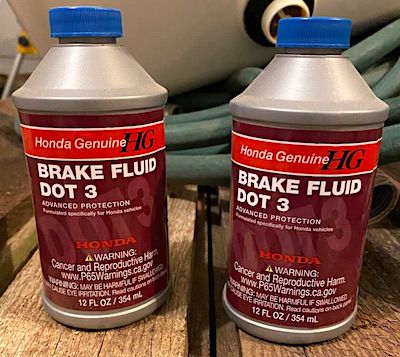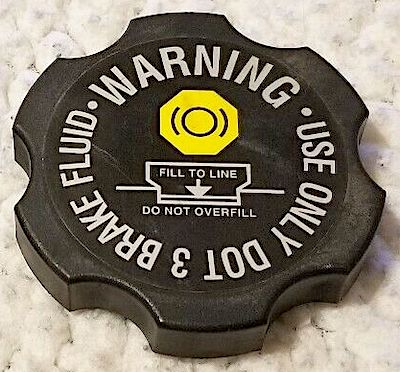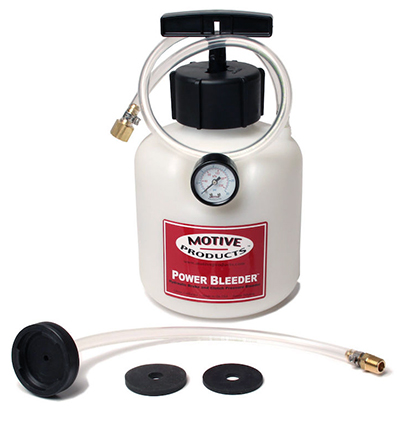Contents
Using the Wrong Brake Fluid Type
Choosing a brake fluid designed for your vehicle is essential. You always use the recommended oil for your vehicle, right? It’s the same with brake fluid. The three most popular brake fluids are DOT 3, DOT 4, and DOT 5.
Because these fluids are designed for specific applications, take care to choose the right one. If you are unsure, see what’s recommended in your service manual. Even though some brake fluids might be mixable with other types, it’s best to stick with what the manufacturer recommends. Using the wrong fluid can lead to failed seals and a loss of brakes.
Spilling Brake Fluid
Brake fluid is corrosive, and it can strip your car paint. That’s why you should be careful when filling the master cylinder.
However, it’s not just your car body that needs to be protected. Spilling brake fluid on the pads can render them useless. Spillage from overspray while filing the brake system or an open reservoir can lead to severe contamination of the pads.
Shop now for brake fluidTo avoid this problem, use a hose on the brake bleeder to direct the fluid flow. You also want to avoid overfilling, another one of the mistakes in this list.
Stripping the Bleeder
If you work on cars, you know how frustrating it can be to strip hardware. Yet, it occurs so quickly. When working with the bleeder, you should be careful not to strip it, or you will add several steps to your brake job.

Letting Dirt In
There aren’t many places where dirt can infiltrate a brake system. The only place that gets opened enough to introduce contaminants is the master cylinder. When you remove the cap, you can inadvertently allow dirt inside.
Unless you keep your car pristine, dirt accumulates under the hood. It’s best to clean the area around the master cylinder before opening the cap. If you don’t, loose debris can fall inside, compromising the brake system.
Overtightening the Bleeder Screw
When you are finished bleeding the brakes, you need to close the bleeder screw. Overtightening the bleeder screw can cause it to break off in the caliper. When this happens, you must replace the entire brake caliper or drill out the bleeder screw.
Instead, consult your car’s service manual to find the appropriate torque level to apply to the bleeder screw. It’s usually best to avoid using an oversized ratchet.
Overfilling the System
Overfilling the brake system is easy, especially if you bleed the system with worn brake pads. As the pads wear down, the pistons advance further to compensate, keeping the pads closer to the rotor.
Overfilling the system makes changing the pads more difficult and time-consuming. You need to remove some of the excess fluid from the master cylinder to push the pistons back to their resting spot. Otherwise, the fluid will spill out of the master cylinder, resulting in one of the aforementioned mistakes.
Trying to Do It Alone
If you have a lot of experience with bleeding brakes, you could use one of these methods to complete the process alone:
- Vacuum bleeding. A vacuum bleeder kit applies suction at the caliper to remove air.
- Pressure bleeding. A pressure bleeder kit applies pressure at the master cylinder to remove air.
However, it’s more effective and quicker to work with a friend. When you bleed brakes with two people, one is responsible for pushing on the brake pedal, while the other releases the air through the bleeders at the same time.
What Happens If You Bleed Brakes Improperly?
The brakes will be less responsive if you don’t get all the air out of the lines. You will notice these critical issues:
- Longer stopping distance
- Spongy brakes
- Increased effort to activate brakes
The air won’t naturally come out of the system unless you bleed the brakes. The pistons require a certain amount of hydraulic pressure to clamp the pads against the rotor. If air bubbles are in the system, the reduced hydraulic pressure makes it harder for the pads to grab the rotors.
While uncommon, you could damage the master cylinder if you don’t bleed the brakes correctly. It’s possible that the master cylinder could be over-stroked while bleeding. For this reason, short strokes are ideal.
If you push the pedal beyond its limits, contamination can damage the internal seals. A new master cylinder could cost $200 to $400, plus the time it takes to add this installation to your brake job.
Finally, suppose you begin with the wheel closest to the master cylinder and bleed out the air. From there, you decide to move onto the wheel furthest from the master cylinder. By pumping air from the longest branch, you could have more air bubbles in the shorter branch.
For this reason, it’s important to follow standard protocol when bleeding brakes. These steps differ based on vehicle type. Check the service manual for details.
Most cars require starting with the brake furthest from the master cylinder. If the master cylinder is found under the hood on the driver’s side, you will begin with the rear brakes on the passenger side.
From here, move to the left rear, right front, and end with the left front brakes. This way, you’ve left the shortest pathway last. Pushing the air out from the furthest end and working closer keeps air from getting into the already bled lines.
Shop now for brake bleeder kits







